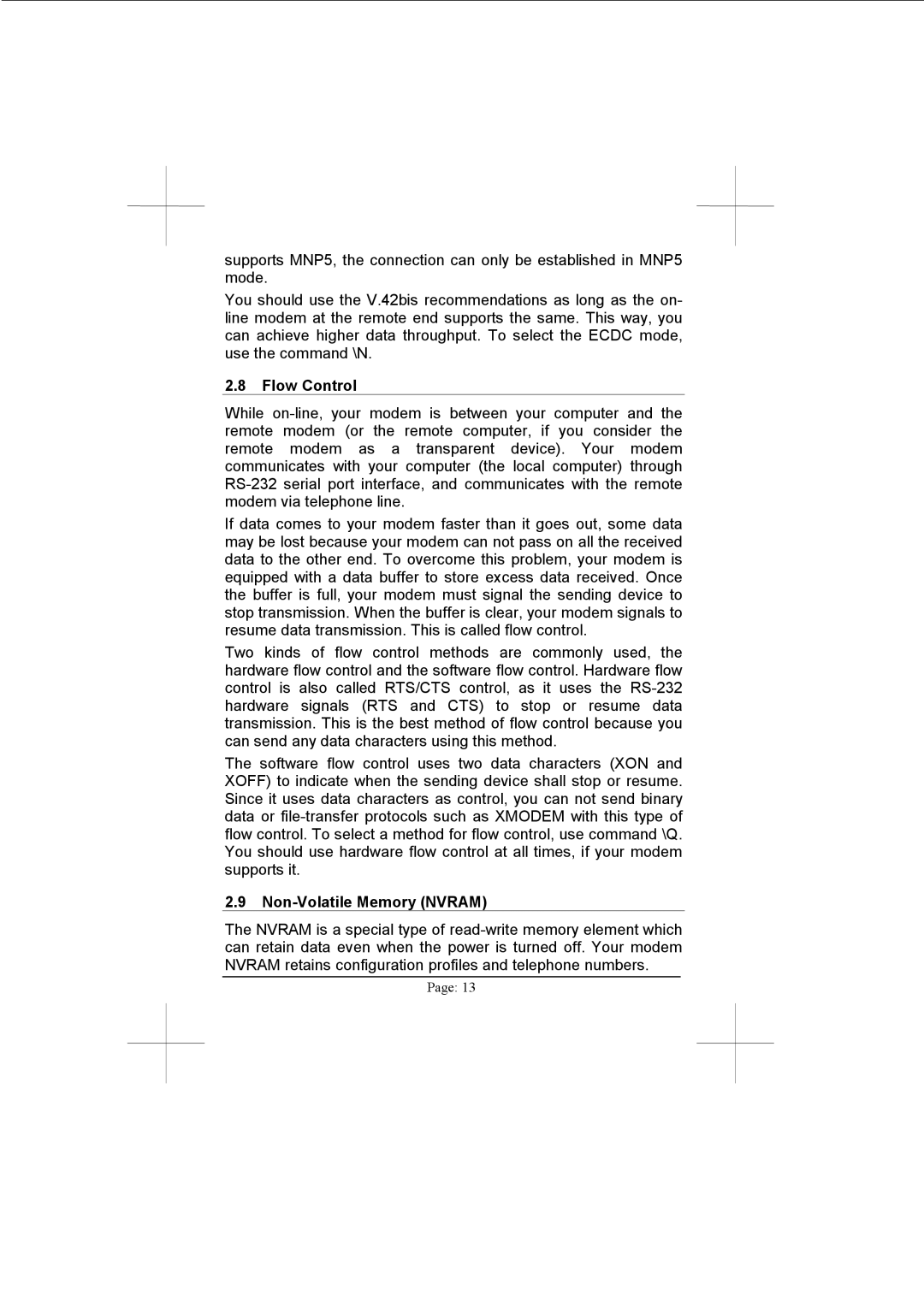
supports MNP5, the connection can only be established in MNP5 mode.
You should use the V.42bis recommendations as long as the on- line modem at the remote end supports the same. This way, you can achieve higher data throughput. To select the ECDC mode, use the command \N.
2.8Flow Control
While
If data comes to your modem faster than it goes out, some data may be lost because your modem can not pass on all the received data to the other end. To overcome this problem, your modem is equipped with a data buffer to store excess data received. Once the buffer is full, your modem must signal the sending device to stop transmission. When the buffer is clear, your modem signals to resume data transmission. This is called flow control.
Two kinds of flow control methods are commonly used, the hardware flow control and the software flow control. Hardware flow control is also called RTS/CTS control, as it uses the
The software flow control uses two data characters (XON and XOFF) to indicate when the sending device shall stop or resume. Since it uses data characters as control, you can not send binary data or
2.9Non-Volatile Memory (NVRAM)
The NVRAM is a special type of
Page: 13
